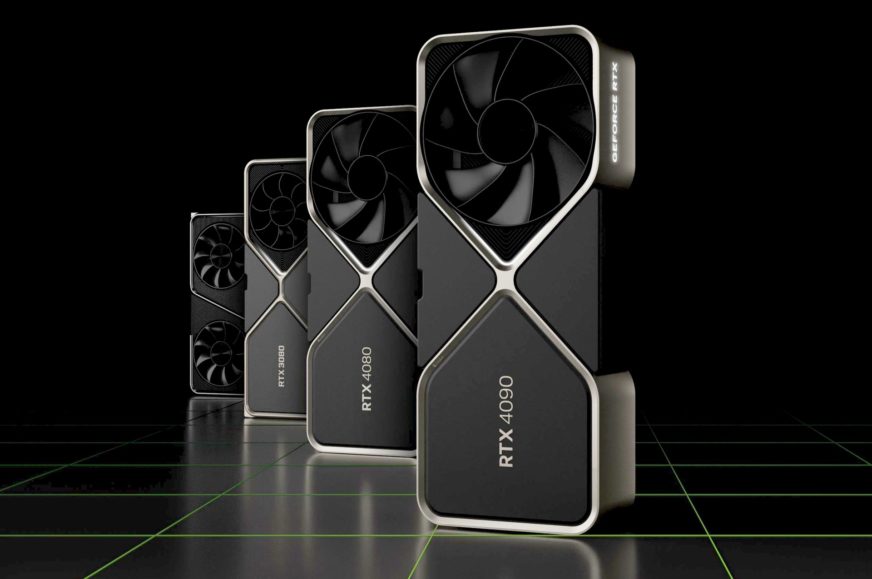First detailed specifications of the upcoming new GeForce RTX 4000 models
Recently, leaks have started to emerge about the new refreshed GeForce RTX 4000 graphics card models that Nvidia is apparently preparing for release next year. Previous reports have talked about Nvidia intending to use larger, more expensive chips for these, which could provide more memory capacity. But now, reports are coming in that cast doubts on this, saying that the GeForce RTX 4080 Super will stay at 16GB.
Kopite7kimi, probably the single most reliable source of leaks about Nvidia GPUs, has mentioned that he believes the previously reported specs to not be true, and has now issued a tweet with its own specs outline for GeForce RTX 4000 Super. These configurations are based on “several weeks” old information. Keep in mind that it’s probably not impossible that Nvidia’s plans have changed since then, or that they will change in the future.
GeForce RTX 4080 Super still 16GB, without a bigger die?
Apparently, the GeForce RTX 4080 Super will still use the AD103 chip and will just enable the currently disabled units, so it won’t utilize the larger AD102. This would replicate the scenario used with the RTX 2080 Super, which also stuck with the original TU104 chip; TU102 remained reserved for the RTX 2080 Ti card (which was the equivalent of today’s RTX 4090) in the Turing generation. The RTX 2080 Super also had lower performance gains than the RTX 2060 Super and RTX 2070 Super models in the refresh at the time, which may well be repeated here as well.
The variant of the chip to be used will have the designation AD103-400 and reportedly 10 240 shaders (80 SM blocks), so it will be a fully enabled version of this silicon. The die has a 256-bit bus, so the GeForce RTX 4080 Super can’t have a wider one. For this reason, it should stick with 16GB of memory. In addition to the 5.3% increase in the number of shader units (the newer RTX 4080 has 76 SM/9728 shaders), Nvidia can also boost clock speeds by enabling a higher TDP for the card. This can result in a performance increase that could still be relatively decent.
GeForce RTX 4070 Ti Super
Ironically, the larger AD102 chip could appear in the card that is one tier lower in the order of SKUs, the GeForce RTX 4070 Ti Super. For this card, however, the use of larger chips will be aimed not to increase performance, but to take advantage of defective chips from production. Note that Kopite7kimi wasn’t too sure about this model’s designation, perhaps it may not be called like this in the end.
The card is said to offer 8448 shaders (66 SMs) and 48MB L2 cache. It could be made from the AS102-175 chip, which will be significantly cut down as is already clear from its number designation. At the same time, however, an alternative configuration with AD103-275 will also be on sale. Both chips will be cut down to the same configuration mentioned before, leaving just 46% of the units active in the AD102 and 82.5% in the AD103. This model is obviously aimed mainly at absorbing the stock of defective pieces of silicon. Memory capacity and bandwidth could be something where this card moves above the GeForce RTX 4070 Ti, though. The full 256-bit bus of AD103 is to be retained, so the graphics card will presumably feature 16GB of memory.
RTX 4070 Super
On the other hand, the RTX 4070 Super will not get a memory upgrade (vs. RTX 4070), as it will stay with the AD104 chip, just cut down differently than before. It will use a variant designated AD104-350 with 7168 shaders (56 SMs) and 48MB L2 cache. However, Nvidia will also be making use of cut down (partially defective) AD103 chips in this card – these will be designated as the AD103-175 variant.
This graphic card will get 12GB of memory because using the AD104 chip means that the memory bus cannot be wider than 192bit. As with previous models, it’s possible that this Super card will run at higher clock speeds than the original RTX 4000 models, which could also come with an increase in TDP.
As mentioned, these specs may be weeks old. Past experience shows that Nvidia shifts around the specs of upcoming graphics card models a lot during the months preceding launch, so some changes may still happen. So take this information with a grain of salt and count with the possibility that the final cards may differ.
Source: VideoCardz, Kopite7kimi (1, 2, 3)
English translation and edit by Jozef Dudáš
⠀









